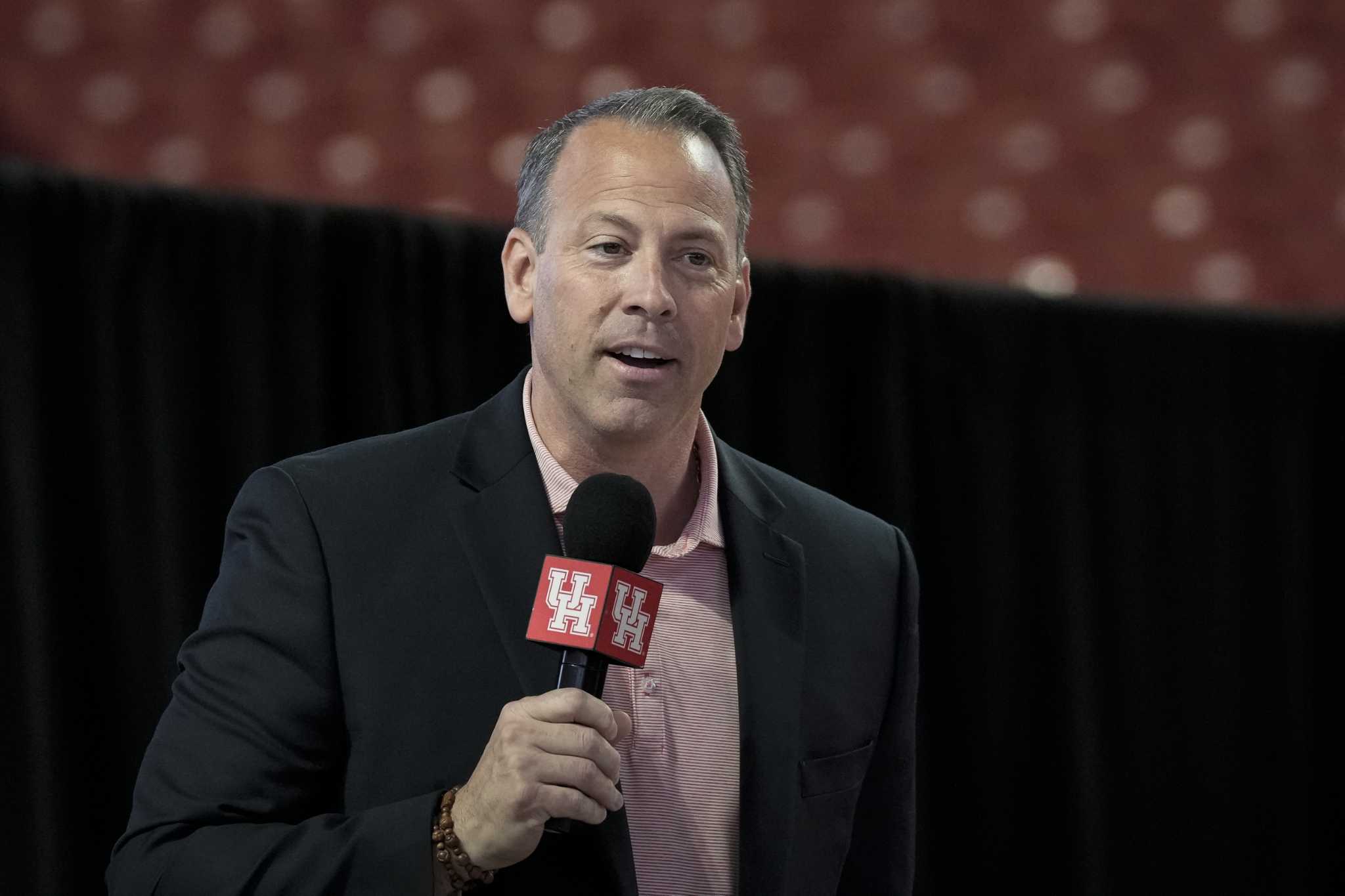The NCAA sports are now 'professional.' How federal settlement impacts UH, Texas and Texas A&M

UH, Texas and Texas A&M will be all-in in the new financial order of college athletics.
A federal judge on Friday signed off on the House vs. NCAA settlement, an agreement that permits schools to directly pay college athletes for the first time.
The settlement resolves three antitrust cases against the NCAA and its power conferences and establishes a 10-year revenue-sharing model. College athletic departments can distribute approximately $20.5 million in name, image and likeness revenue to athletes beginning July 1 for the 2025-26 season.
Previously, athletes could earn NIL money only with outside parties, including school-affiliated donor groups called collectives.
The Cougars, Longhorns and Aggies all plan to opt in and pay the full amount to their athletes.
New UH athletic director Eddie Nuñez said UH is "all-in" to contribute the maximum-allowable amount of $20.5 million during the first year.
That represents a significant financial step for UH - which has the smallest athletic budget among Power Four schools and is heavily subsidized by the university - to remain competitive in the ever-changing college athletics landscape.
"The commitment was we're going all-in," Nuñez told the Houston Chronicle earlier this year before the final details were worked out. "We're going to do this at the highest level we can."
The question for each, is how the money will be divided among their sports.
Many schools are expected to use a formula that would pay 75% to football, 15% to men's basketball and the remaining to women's basketball and Olympic sports.
One possible scenario for UH would be closer to 68-69% for football, 23-25% for men's basketball and the rest among UH's other 15 varsity sports. The football percentage would keep UH in line with many of the top programs in the country, while a larger chunk for men's basketball is a premium for a perennial national title contender.
"I'm not treating them just as a basketball program - I'm treating them as one of the elite basketball programs," he said. "Their percentage is going to be higher than the average than most across the country. That's a commitment we made.
"I believe in what coach (Kelvin) Sampson has built, what he's doing and where the program is today and where it's going. From my standpoint, that was a decision that was articulated and communicated to the administration and others."
Nuñez added: "But at no point are we going to put football at a disadvantage."
Texas will fully fund all 21 of its sports to the full scholarship roster limit. Football will receive 75%, men's basketball 15% and women's basketball 5%. The final 5% will go up to four different sports.
Texas will incur almost $30 million in new costs - $20.5 million in revenue sharing and $9.2 million to fund 466 scholarships.
"I haven't read it yet," Texas athletic director Chris Del Conte said. "We've known it's been coming. We thought it was coming in April. But we'll be ready to rock and roll."
Earlier this year, Del Conte said the athletic department is counting on $13 million in new revenue and $6 million in budget reductions and other staff efficiency.
Texas A&M athletic director Trev Alberts , speaking at the SEC spring meetings last week, didn't say what the specific allocations from revenue-sharing will be for Aggie sports, but did say the school has chosen six sports to share that $20.5 million and will fully fund what it expects to be 410 scholarships and said football was the program's lone revenue generator. That could come as a shock to some since most Division I programs make a profit off men's basketball.
Alberts has informed those six head coaches of that decision, but didn't say how much football would draw from that.
"We need to through some data in the first year, see what others are doing competitively," he said. "But I think we have a good strategy. In this new reality, we simply cannot afford to add additional debt service."
Alberts said A&M isn't interested in emphasizing only football and baseball, for instance.
"We don't want to go down the path of just investing in two sports and basically downsizing the support of every other sport. It's really not of interest to us. We want to have a broad-based athletic department, but we will never do anything that ultimately is harmful to the one sport that frankly drives the entire revenue engine of Texas A&M."
The final approval from Judge Claudia Wilken of the Northern District of California, who had previously ruled against the NCAA in the high-profile O'Bannon and Alston cases, took nearly a year.
One of the bigger issues was the creation of roster limits, which will cap the size of each sport while allowing every player on the roster to receive a scholarship - partial or full.
There’s more to Houston with the Chronicle. Subscribe today for just 25¢.
Post a Comment